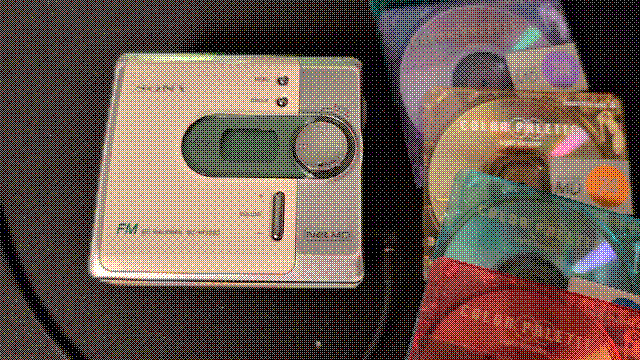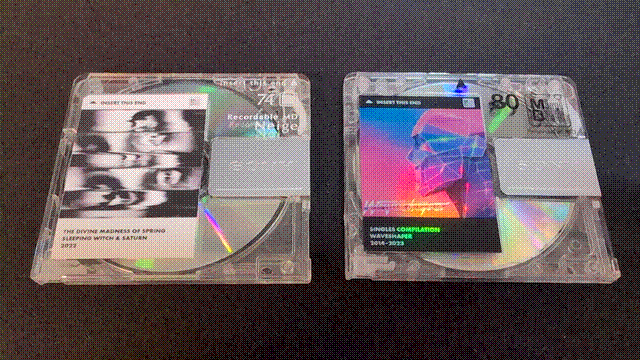

In what might've been one of the early foreshadowings of my future strongly anticapitalist attitude, it really bothered me as a kid that CDs did not come with a protective covering over the actual data-carrying part as the media they were replacing had. (3.25" floppy disks, I mean. I was using software on CDs long before I was using music CDs, not in least part because my first computer had no sound card initially.) It felt like the manufacturers wanted your purchases to eventually get scratched up beyond use so that you'd eventually have to go out and buy a replacement. So you can imagine my delight (and frustration) when I, in my middle-aged dotage, discovered MiniDiscs had been big in Japan some 20 to 30 years ago.
They're like colorful, cute little floppy discs. They can be infinitely rewritten, and you can buy them in lots for as little as $1.15 US apiece or so from eBay, and for even less on Yahoo! Auctions in Japan.
After my first bulk purchase of minidiscs, I began keeping a minidisc listening log to track the random music and recordings the discs came with. I didn't expect this practice to last long, and it didn't, but I had fun exploring and discovering new music in this way for a time.
There are a number of wifi-constrained players marketed for children these days, such as the Yoto Player. You pay anywhere from $70 to $100 for a device that streams music over the Internet when prompted by an RFID-tagged card, each of which corresponds to a single album or playlist, and each of which must be purchased for $10 apiece. Utter garbage.
My wife suggested buying one of these for our toddler when he turned three; I counter-offered some Minidiscs and a Minidisc boombox. The boombox cost about as much as a Yoto Player and isn't crippled by dependence on a wifi connection and a proprietary service. He has a stack of eight minidiscs loaded up with his favorite music, which I had on hand but was not presently in need of, saving me a further $80 or so. Unlike the overpriced RFID cards, the minidiscs can be re-labeled and re-recorded indefinitely, and they won't stop working if or when the Yoto Player team gets "acquihired" and their servers get shut down.
If I hadn't had the minidiscs on hand, honestly, I probably would have used CDs or cassette tapes for the same purpose. But minidiscs were on hand, and their durability relative to CDs and ease of use relative to cassettes seemed ideal.
On 2024-12-15 I began printing labels for music I'd purchased on Bandcamp and applying them to the MiniDiscs I'd burned. I used the MiniDisc label generator website to make these.
